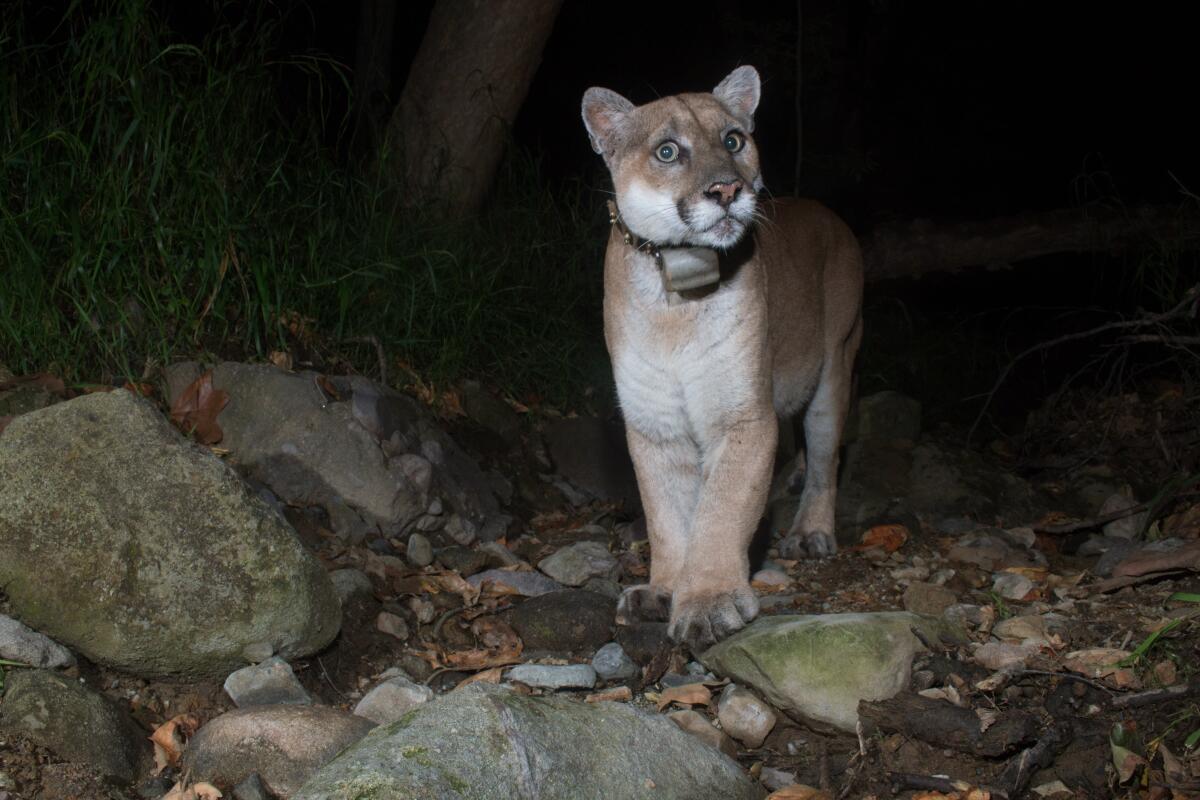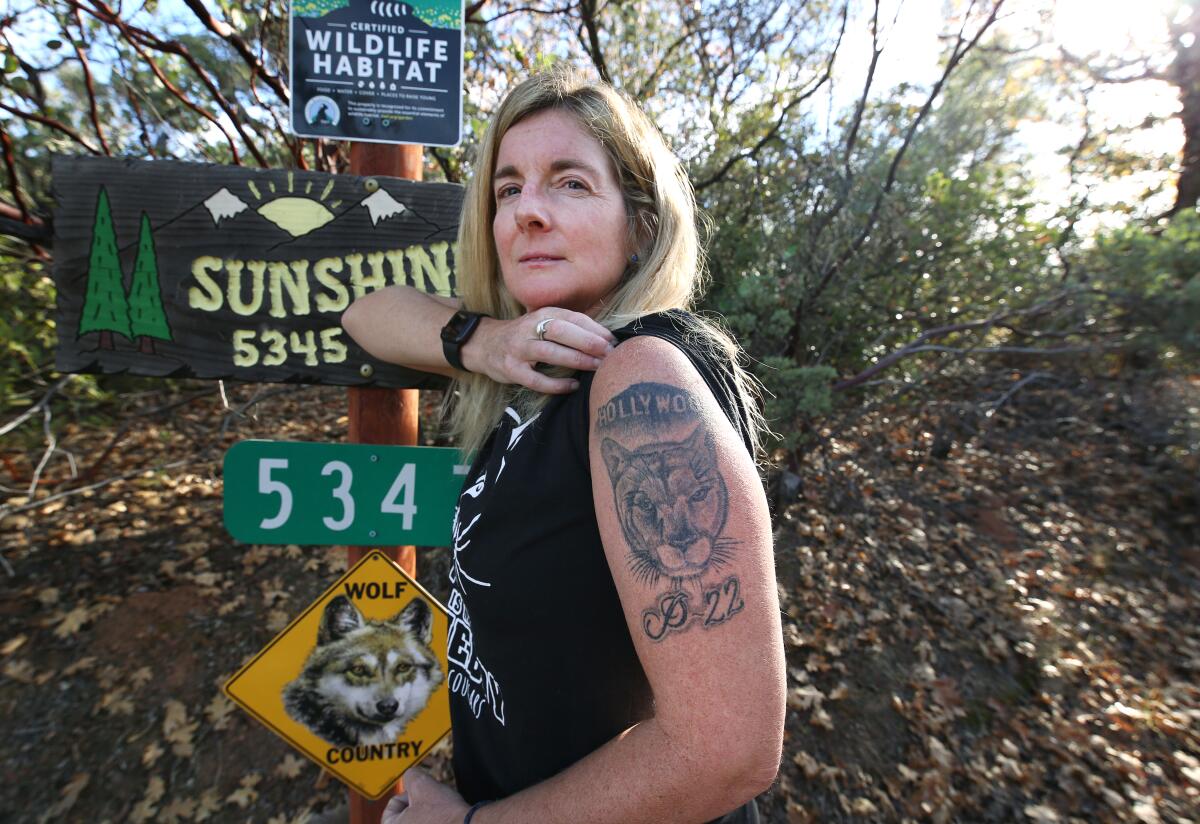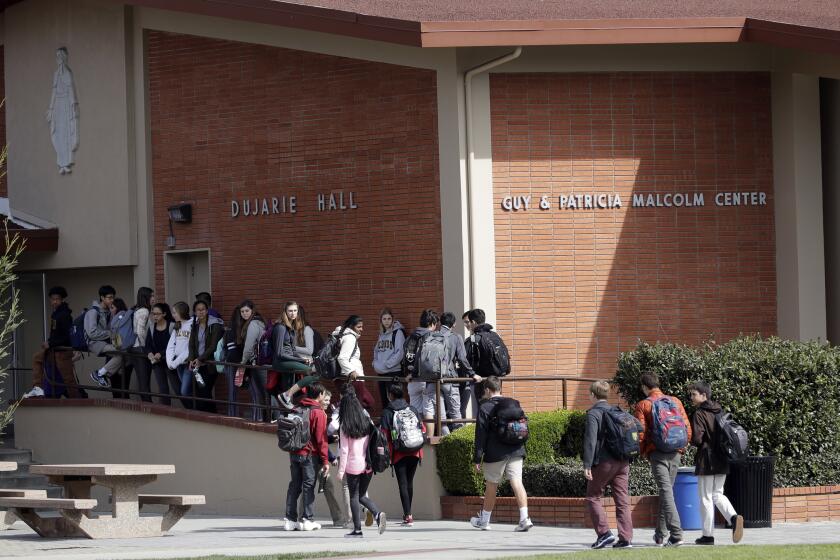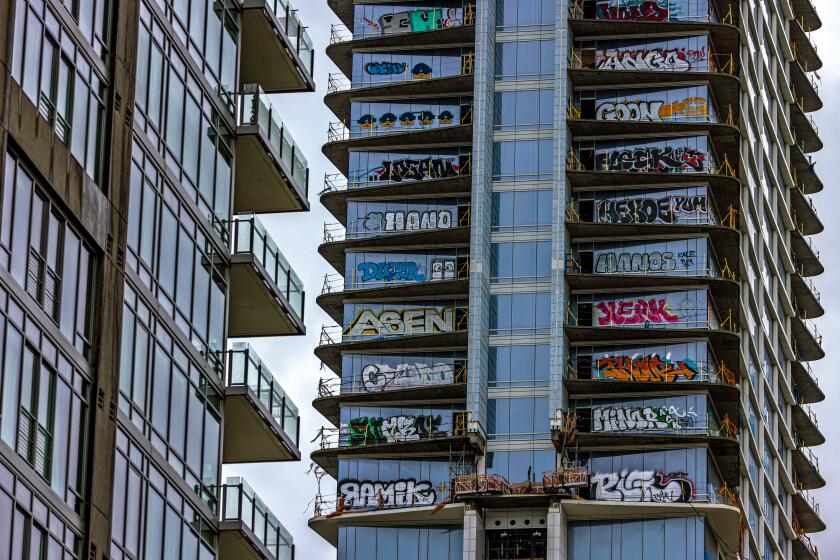We love P-22. We also sealed his fate (whatever that will be)

Good morning, and welcome to the Essential California newsletter. It’s Friday, Dec. 16. I’m Ryan Fonseca and I, like many Southern Californians, am worried about P-22.
The wildly famous big cat was captured earlier this week by wildlife officials, who report his health has drastically declined. Biologists also believe the puma was struck by a car before he retreated to the backyard in Los Feliz where he was caught.
In recent months, he’d been prowling unusually close to humans. Last month he killed a leashed Chihuahua — not his typical meal — and later attacked another dog.
Officials with the California Department of Fish and Wildlife now say P-22 won’t be returning to his home territory. Biologists are carefully considering two options: relocation to a wildlife sanctuary or, if his health issues can’t be properly treated, euthanasia.
To put it mildly, Angelenos and many people around the world love this lion. He’s graced the pages of National Geographic; he’s adorned murals, ugly sweaters and an array of other merch (I have a hoodie that depicts him prowling near Griffith Observatory); and he’s been referenced on TV shows.
This week I spoke with Beth Pratt, a regional executive director in California for the National Wildlife Federation and P-22’s self-proclaimed “BFF.” It’s hard to argue with her on that — she has a tattoo of his face on her arm. Pratt has spent nearly a decade raising millions to build a wildlife crossing over the 101 Freeway to provide pumas safe passage (more on that below).
Pratt told me that no matter what happens to P-22, he has created a lasting legacy. She added:
He changed the way we look at L.A. [and] the way we look at Griffith Park. I think he made us more human. He made us connect more to that wild place in ourselves. We are part of nature and he reminded us of that. Even in the city which we thought wildness had been banished from a long time ago, he reminded us it’s still here.
While we’re very much in our feelings as we wait for updates, it’s important to remember that his fate — and the fate of his fellow cougars — is inextricably linked to our actions.
He’s one of more than 100 pumas that have been tracked by wildlife researchers from the National Park Service’s Santa Monica Mountains National Recreation Area. P-22 might have unique home turf, but he’s faced the same threats as his fellow pumas — mainly us.
Increasing our developments into wild spaces has decreased mountain lions’ territories. And our sprawling freeway network cuts them off from roaming to new areas. Many lions that try to spread out are killed by drivers while attempting to cross our freeways.
At 12 years old, P-22 has lived an impressively long life for a male lion. But for Pratt, the assessment that he was struck by a car is “the final tragic note” in his remarkable life and speaks to how “the lack of connected space didn’t allow him to be fully a mountain lion.”

Our freeways “isolate [cougars] to the point where they are breeding themselves out of existence,” Pratt explained, or in the case of P-22, not breeding at all.
A shrinking gene pool means negative health effects for new kittens (the first known birth defects were reported in 2020). There’s also mange, which lions can be susceptible to after eating prey with rat poison in their systems. P-22 himself was treated for the illness in 2014.
Researchers predict the local puma population could disappear within 50 years.
But Pratt says their fate isn’t sealed, thanks to a roughly $90-million wildlife crossing now under construction across the 101 Freeway. That crossing, expected in 2025, is designed to give mountain lions a protected path to better food sources and mating grounds.
Pratt says P-22 helped make it a reality:
We are building the world’s largest wildlife crossing because of him. We would not have a crossing if it wasn’t for his story.
Here are a few more essential stories from California
Note: Some of the sites we link to may limit the number of stories you can access without subscribing.
A voter-approved plan that will levy a one-time “mansion tax” on multimillion-dollar property sales isn’t sitting well with L.A.’s rich. Some affluent Angelenos are now exploring ways to dodge the tax, which would fund affordable housing and homelessness prevention programs. Los Angeles Times
People who worked at the site of a former ghost town in the Sierra Nevada say the woman who owned and operated the property treated them like “indentured servants.” Former workers told KQED that Betsy Ann Cowley, who purchased the 64-acre former town of Pulga in 2015, promised them flexible, creative work and access to nature, but then withheld pay. They say they were left “broke, desperate and, in some cases, fearing for their safety.” KQED
Five years ago, when UCLA launched a cannabis research initiative, Times reporters asked university officials if they’d accepted donations from the cannabis industry. They said no. But documents obtained by the newsroom show that actually, yes, cannabis companies and investors did provide some early financial support. Los Angeles Times
UC’s striking academic workers say they’re weary, but won’t give up. The historic labor stoppage is well into it’s fifth week and negotiations between units representing workers and the university have reached a new phase as Darrell Steinberg, the mayor of Sacramento and former leader of the state Senate, stepped in to mediate the labor dispute. Los Angeles Times
Honey bees get a lot of attention, but California’s native bees bring a lot to the ecological table too. Artist-turned-community scientist Krystle Hickman is on a mission to spread the word by photographing California’s endangered native bees. Los Angeles Times
Free online games
Get our free daily crossword puzzle, sudoku, word search and arcade games in our new game center at latimes.com/games.
CALIFORNIA ALMANAC
Los Angeles: Mostly sunny, 66. San Diego: Mostly sunny, 65. San Francisco: Sunny, 57. San Jose: Frost and patchy fog then sunny, 58. Fresno: Frost and dense fog then sunny, 56. Sacramento: Frost and patchy fog then sunny, 53.
AND FINALLY
We’re trying something new down here! Earlier this week, I asked you to send us photos and blurbs about California landmarks that are interesting or important to you. Submissions are trickling in, so we’re going to start sharing them.
To kick off this experiment of landmark love, here’s a photo from Rick Derevan of Atascadero:

Rick writes:
The Paul Bunyan and Babe the Blue Ox statues are emblematic of the kind of kitschy roadside attractions that make road travel so much fun. And they are gigantic. I included our two dogs (Barkley and Brooklyn) in the photo to show the scale. The statues are adjacent to Highway 101 in Del Norte County between the towns of Klamath and Crescent City. I took this photo on Sept. 18, 2018, on a road trip with the dogs we took to the north coast area of California.
Now it’s your turn! What are California’s essential landmarks? Fill out this form to send us your photos of a special spot in California — natural or human-made. Tell us why it’s interesting and what makes it a symbol of life in the Golden State. Please be sure to include only photos taken directly by you. Your submission could be featured in a future edition of the newsletter.
Please let us know what we can do to make this newsletter more useful to you. Send comments to essentialcalifornia@latimes.com.
For the Record: The Dec. 8 edition of this newsletter stated that UC student workers pay tuition to study and work. UC officials clarified that a portion of student workers who meet certain requirements have their tuition covered.
Start your day right
Sign up for Essential California for news, features and recommendations from the L.A. Times and beyond in your inbox six days a week.
You may occasionally receive promotional content from the Los Angeles Times.




